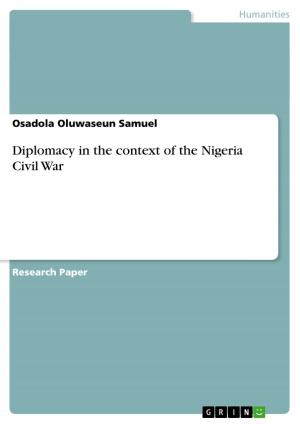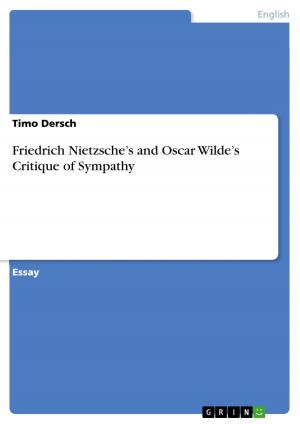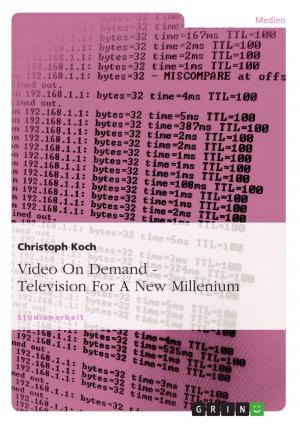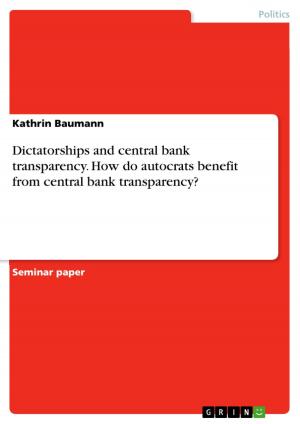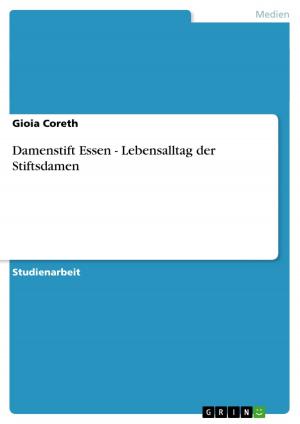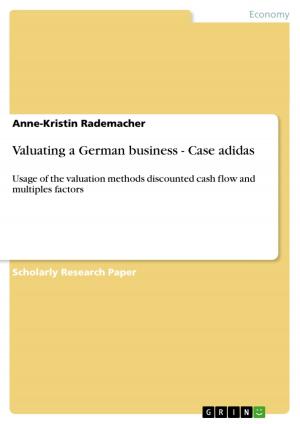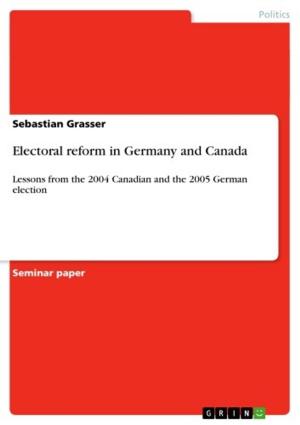Gender identities in the poetry of Emily Dickinson and in the narrative life of Frederick Douglass
Nonfiction, Entertainment, Drama, Anthologies| Author: | Katrin Gischler | ISBN: | 9783638441407 |
| Publisher: | GRIN Publishing | Publication: | November 22, 2005 |
| Imprint: | GRIN Publishing | Language: | English |
| Author: | Katrin Gischler |
| ISBN: | 9783638441407 |
| Publisher: | GRIN Publishing |
| Publication: | November 22, 2005 |
| Imprint: | GRIN Publishing |
| Language: | English |
Seminar paper from the year 2005 in the subject American Studies - Literature, grade: 65%, University of Reading (Department of English and American Literature), course: Writing America 2, 11 entries in the bibliography, language: English, abstract: Before we deal with gender identity it is first of all important to understand the definition of gender. The Oxford Companion to African-American Literature explains it as follows: 'Gender is different from sexuality [sic!]. Sexuality concerns physical and biological differences that distinguish males from females. Cultures construct differences in gender. These social constructions attach themselves to behaviors, expectations, roles, representations, and sometimes to values and beliefs that are specific to either men and women.' In this following paper I'm going to analyse the different gender identities appearing in the poetry of Emily Dickinson and the autobiography of Frederick Douglass.1 My main focus is concentrated on the use and description of gender in both genres. How are gender identities characterized and how do we get to know them? Which gender does Dickinson use in the chosen poems and how are their identities constructed? Referring to Douglass it is interesting to look at how he constitutes himself as an identity. Referring to Emily Dickinson, I chose several poems, like 'I'm 'wife' - I've finished that-', 'I felt my life with both hands', 'A Wife- at Daybreak I shall be', 'I was the slightest in the House-' and 'I tie my Hat'. Gender Identities in Emily Dickinson's Poetry In the lyric poem there is for the most part no description of who is speaking, no embodiment, no development, no introduced 'character'. For example, Dickinson's various personae or self-positionings as 'Earl', 'Wife' or 'Queen' are known either only by the tone and manner of the text or by self-naming within the poem's text. Dickinson's speaker exclaims 'A Wife - at Daybreak- I shall be-' but the poem provides no corroboration of these identity markers. Dickinson neither describes her speakers in narrative terms nor describes their positions as separate from herself, except in the single cryptic comment to Thomas Wentworth Higginson, 'When I state myself [that is, use 'I'] as the Representative of the Verse- it does not mean me- but a supposed person'.2
Seminar paper from the year 2005 in the subject American Studies - Literature, grade: 65%, University of Reading (Department of English and American Literature), course: Writing America 2, 11 entries in the bibliography, language: English, abstract: Before we deal with gender identity it is first of all important to understand the definition of gender. The Oxford Companion to African-American Literature explains it as follows: 'Gender is different from sexuality [sic!]. Sexuality concerns physical and biological differences that distinguish males from females. Cultures construct differences in gender. These social constructions attach themselves to behaviors, expectations, roles, representations, and sometimes to values and beliefs that are specific to either men and women.' In this following paper I'm going to analyse the different gender identities appearing in the poetry of Emily Dickinson and the autobiography of Frederick Douglass.1 My main focus is concentrated on the use and description of gender in both genres. How are gender identities characterized and how do we get to know them? Which gender does Dickinson use in the chosen poems and how are their identities constructed? Referring to Douglass it is interesting to look at how he constitutes himself as an identity. Referring to Emily Dickinson, I chose several poems, like 'I'm 'wife' - I've finished that-', 'I felt my life with both hands', 'A Wife- at Daybreak I shall be', 'I was the slightest in the House-' and 'I tie my Hat'. Gender Identities in Emily Dickinson's Poetry In the lyric poem there is for the most part no description of who is speaking, no embodiment, no development, no introduced 'character'. For example, Dickinson's various personae or self-positionings as 'Earl', 'Wife' or 'Queen' are known either only by the tone and manner of the text or by self-naming within the poem's text. Dickinson's speaker exclaims 'A Wife - at Daybreak- I shall be-' but the poem provides no corroboration of these identity markers. Dickinson neither describes her speakers in narrative terms nor describes their positions as separate from herself, except in the single cryptic comment to Thomas Wentworth Higginson, 'When I state myself [that is, use 'I'] as the Representative of the Verse- it does not mean me- but a supposed person'.2


